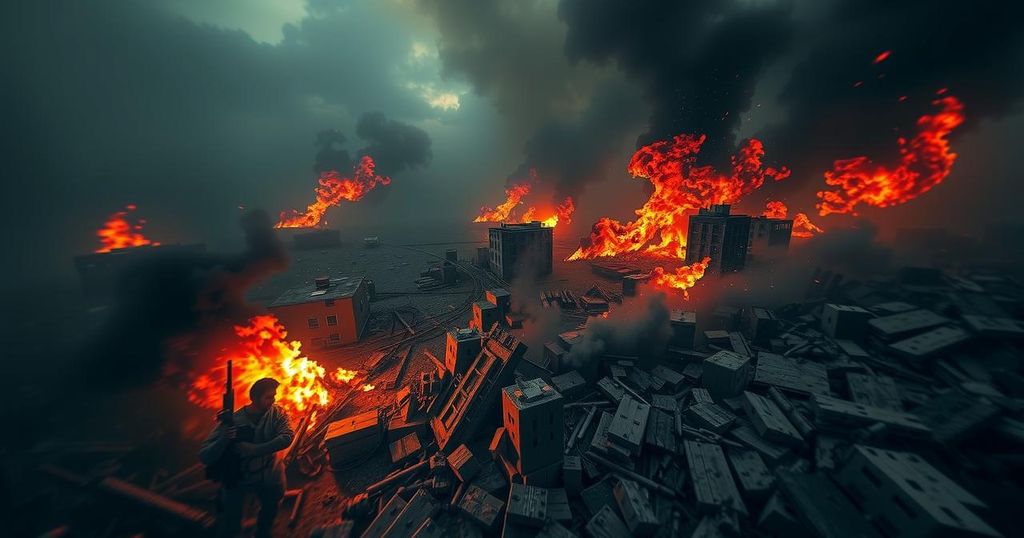Renewed Conflict in Syria: Key Players and Recent Developments

Syria’s civil war has intensified as rebel forces have seized control of significant areas in Aleppo, following the distraction of major foreign military supporters. Since the 2020 ceasefire, Russian and Syrian forces have launched airstrikes to suppress these insurgents, leading to heavy casualties. The situation involves complex alliances with nation-states supporting various factions, significantly affecting control over the region.
Syria’s ongoing civil war has surged into the global spotlight once again following a significant offensive by rebel forces, who have successfully captured substantial portions of the city of Aleppo and numerous adjacent towns. This escalation comes in the wake of weakened positions among key players, leading to intense confrontations since a ceasefire was enacted in 2020. Russia and Syria have responded with a series of airstrikes targeting the rebels, resulting in considerable casualties.
The conflict, which began in 2011 with dissent against President Bashar Assad’s regime, has seen multiple foreign nations establishing military footholds within Syria, including the United States, Russia, and Iran. Opposition factions, alongside American-supported forces, collectively govern over a third of the nation’s territory. Israel maintains control over the Golan Heights, an area it seized during the 1967 conflict.
Among the principal actors in the conflict are the pro-government forces of Syria, which receive substantial military backing from both Russia and Iran. Historically, the government troops have dominated much of the nation, securing vital city centers like Damascus. Their recent losses in Aleppo mark a significant turning point in the conflict, jeopardizing their earlier gains. Iranian military support, while crucial, has been hampered by Hezbollah’s weakening due to their recent confrontations with Israel. Furthermore, Iranian-backed militias have regrouped in Syria to bolster the government’s response efforts.
On the insurgent front, the Hayat Tahrir al-Sham leads the opposition forces and has established itself as a major entity in northwest Syria. With a shifted focus towards governance and alliances, HTS presents a more moderate image than during its earlier affiliations with al-Qaida. Additionally, Turkey continues to support various armed factions, including the Syrian National Army, which has targeted U.S.-backed Kurdish-controlled regions.
The Kurdish-led Syrian Democratic Forces (SDF), receiving American support, have made significant strides against the Islamic State group and maintain control over eastern Syria. Approximately 900 American troops are present in the region to prevent any resurgence of extremist activities. Notably, the SDF still holds sections of Aleppo, encircled by insurgent factions, considering potential withdrawals to northeast Syria due to their precarious situation.
Syria’s civil war has evolved significantly since its inception in 2011, beginning as a movement against President Bashar Assad and increasingly drawing in international powers and insurgent groups. Key players include the Syrian government supported by Russia and Iran, various opposition factions led by groups such as the Hayat Tahrir al-Sham, and the U.S.-backed Syrian Democratic Forces. The dynamics of the conflict fluctuate with localized military engagements and shifts in foreign military support, impacting control over strategic territories within Syria.
In summary, the Syrian civil war continues to be defined by complex interactions among various domestic and international actors. The recent advances by rebel forces underscore a shifting balance of power, as traditional military supporters of the Assad regime grapple with distractions and setbacks. The stalemate remains fragile, and ongoing developments will require vigilant observation to gauge the potential for further escalations or resolutions within this protracted conflict.
Original Source: mynorthwest.com








